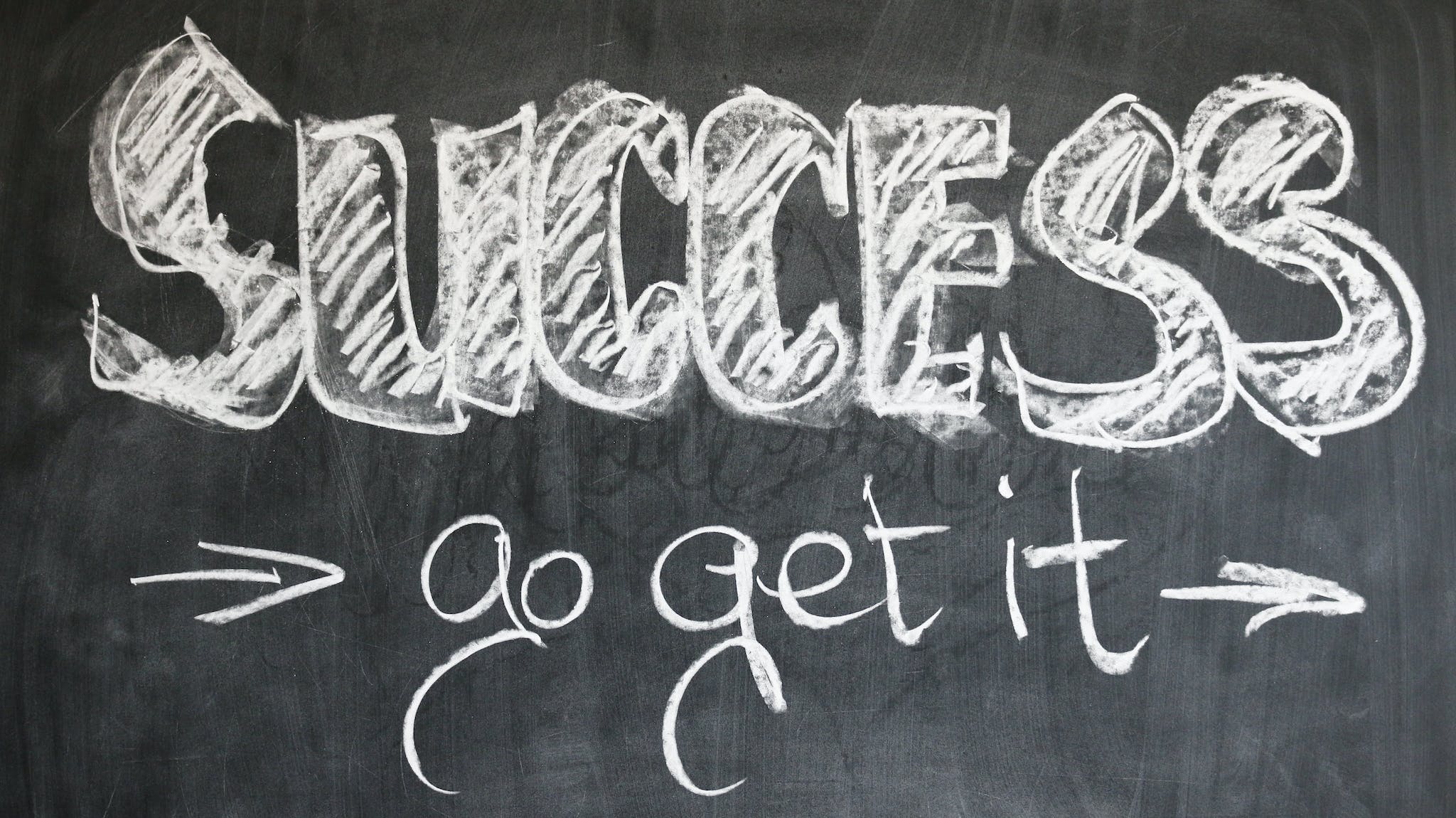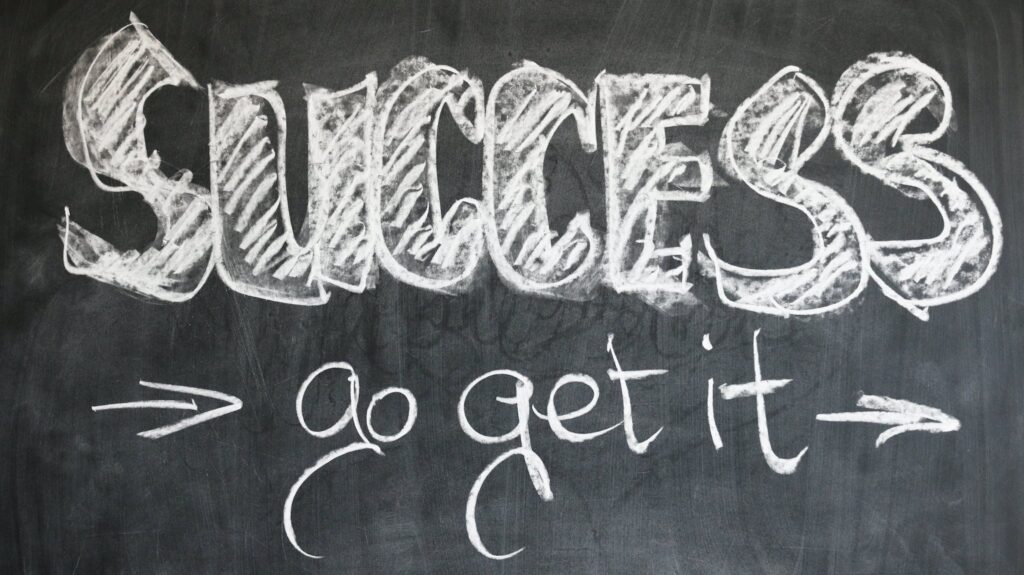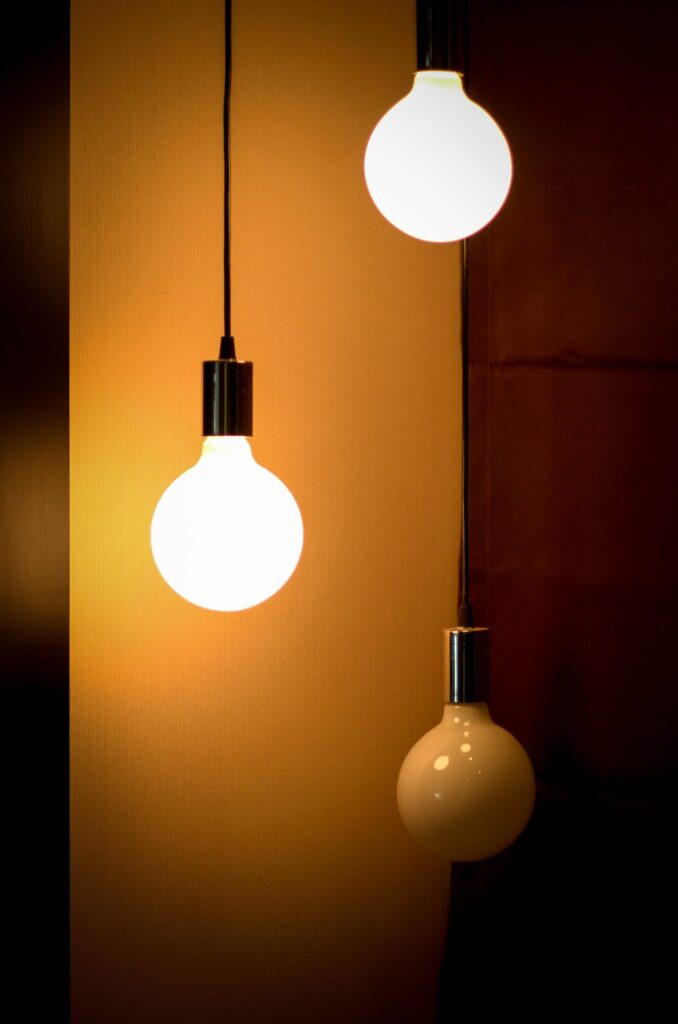Visualizing Success: Using Vision Boards to Drive Productivity


Table of Contents
Creating a Vision: Setting Goals and Objectives
Setting goals and objectives is a crucial step in the process of creating a Visualizing for your future. It provides a clear direction and roadmap for turning your dreams into tangible realities. When setting goals and objectives, it is important to be specific and realistic. Vague or general goals can be difficult to measure and achieve, whereas specific and attainable goals can provide a sense of clarity and motivation. It is also important to set deadlines for your goals, as they can help you stay focused and accountable. Additionally, consider breaking down your larger goals into smaller, manageable tasks to make the process more achievable and less overwhelming. By setting clear goals and objectives, you are laying the foundation for a successful and fulfilling vision.
The Power of Visualization: Understanding the Science behind Vision Boards

Visualization is a powerful tool that taps into the science of the human brain. When we create vision boards, we engage in a process that goes beyond simple goal-setting. By visualizing our goals and desires through images, words, and symbols, we activate the subconscious mind, which in turn influences our thoughts, emotions, and actions.
Research has shown that visualization can have a profound impact on our brain’s neural networks. When we visualize ourselves achieving our goals, the brain generates electrical activity that is similar to actually performing the actions. This phenomenon, known as “mental rehearsal,” primes the brain for success and enhances our motivation, focus, and confidence.
To fully harness the power of visualization, it is important to understand the science behind it. By creating a visual representation of our goals and dreams, we send a clear message to our brain about what we want to achieve. This activates our reticular activating system (RAS), a network of neurons that filters incoming information and directs our attention towards what is relevant to our goals. As a result, we become more attuned to opportunities and resources that align with our vision, making it easier to turn our dreams into reality. The power of visualization lies in its ability to reprogram our minds, shaping our beliefs and guiding our actions towards the achievement of our goals.
Choosing the Right Medium: Exploring Different Types of Vision Boards
When it comes to creating a vision board, choosing the right medium is crucial in bringing your goals and aspirations to life. There are various types of vision boards that you can explore, each offering its own unique benefits and advantages. One popular option is the traditional physical vision board, which involves gathering images, words, and other visual representations and arranging them on a poster board or corkboard. This tangible approach allows for a hands-on experience, where you can physically interact with your board and easily make changes as your vision evolves.
Another type of vision board that has gained popularity in recent years is the digital vision board. Using online platforms or apps, you can create a virtual vision board by uploading images, adding text, and arranging them in a visually appealing way. This digital format offers flexibility and convenience, allowing you to easily access and update your board from anywhere with an internet connection. Additionally, digital vision boards can be easily shared with others, making it a great tool for collaboration and inspiration.
Regardless of the medium you choose, the most important thing is to select one that resonates with you and aligns with your personal preferences and goals. Whether you prefer the tactile experience of a physical vision board or the convenience of a digital one, the medium should be a reflection of your individuality and serve as a powerful tool in manifesting your dreams and aspirations.
Gathering Inspiration: Finding Images and Words that Resonate with Your Goals
When it comes to creating a vision board, one of the most important steps is gathering inspiration. Finding images and words that resonate with your goals is crucial in order to create a visual representation that truly reflects your desires and aspirations. But how do you go about finding the right images and words?
One approach is to start by brainstorming a list of keywords or phrases that represent your goals or the feelings you want to evoke. For example, if your goal is to improve your physical fitness, you might consider words like “strength,” “health,” or “endurance.” Once you have your list, you can search for images and quotes that align with these keywords. Online image databases, such as Shutterstock or Getty Images, can be a great resource for finding high-quality visuals. Additionally, websites like Pinterest or Instagram offer a wealth of inspiration, with countless boards and accounts dedicated to goal setting and self-improvement. By taking the time to curate a collection of images and words that truly resonate with you, you’ll be well on your way to creating a vision board that speaks to your deepest desires.
Organizing Your Vision Board: Tips for Structuring and Arranging Your Visuals
Organizing your vision board is a crucial step in the manifestation process. When structuring and arranging your visuals, it’s important to consider the flow of energy and the impact the arrangement can have on your subconscious mind. One helpful tip is to start by identifying the main areas of your life that you want to focus on, such as career, relationships, health, or personal growth. Then, arrange the visuals in a way that visually represents the balance you want to achieve among these areas.
Consider the placement of each image or word on your board. You may want to group related visuals together or create a visual timeline that represents the progression of your goals. Additionally, try to create a sense of harmony by using colors, patterns, and textures that complement one another. You can also experiment with different layouts, such as organizing your visuals in a grid or a collage-style arrangement. Ultimately, the goal is to create a visually appealing and cohesive vision board that speaks to your subconscious and ignites your motivation to achieve your goals.
Creating Balance: Incorporating Various Areas of Life into Your Vision Board
When creating a vision board, it’s important to incorporate various areas of life to achieve balance. This means considering not only your career and financial goals, but also your personal relationships, health and wellness, hobbies and interests, and spiritual growth. By including visuals and affirmations related to these different aspects, you can create a well-rounded vision for your future.
For example, if your career and financial goals are important to you, you might include images of a successful businessperson or a thriving bank account. But don’t forget to also include visuals that represent your personal relationships, such as a picture of your family or a symbol of love and unity. In addition, consider incorporating images related to your health and wellness, like a fit body or a plate of nutritious food. This holistic approach to your vision board will help ensure that you’re not neglecting any important areas of your life and will create a more balanced and fulfilling vision for your future.
Setting Intentions: Using Affirmations and Positive Statements on Your Board

Using affirmations and positive statements on your vision board is a powerful technique for setting intentions and manifesting your goals. Affirmations are positive statements that reflect the goals and outcomes you want to achieve in your life. By repeating these statements on a regular basis, you can reprogram your subconscious mind to believe in and work towards these goals.
When selecting affirmations for your vision board, it is important to choose statements that resonate with you personally. They should be specific, positive, and in the present tense. For example, instead of saying “I will be successful,” you could say “I am confident, capable, and successful in all areas of my life.”
Incorporating affirmations into your vision board can help reinforce your intentions and create a positive mindset. By regularly visualizing and affirming your goals, you are sending a clear message to the universe about what you want to attract into your life. This practice can boost your motivation, increase your self-belief, and ultimately help you achieve the success you desire.
Making it Personal: Adding Personal Touches and Sentimental Items
Adding personal touches and sentimental items to your vision board can help create a deeper emotional connection to your goals. One way to make it personal is by including photographs of loved ones or special moments that inspire you. These images can serve as a constant reminder of the important people in your life and the reasons why you are working towards your goals.
Another way to add a personal touch is by including meaningful quotes or affirmations that resonate with you. Choose words that uplift and motivate you, and place them strategically on your vision board where you can easily see them. These positive statements can help reinforce your belief in yourself and your ability to achieve your goals.
Including sentimental items can also add a special touch to your vision board. These can be small items that hold sentimental value or represent an important aspect of your goals. For example, if you have a goal of traveling, you can include a keychain from a previous trip as a reminder of your desire to explore new places. These items can be little reminders of what you are working towards and can evoke positive emotions as you visualize your future success.
By making your vision board personal and incorporating sentimental items, you can create a stronger emotional connection to your goals and enhance your motivation to achieve them.
Keeping it Realistic: Balancing Ambition with Achievable Goals
Keeping your vision board realistic is essential to ensure that you set achievable goals for yourself. While it’s important to dream big and aim high, it’s equally important to be grounded in reality and consider the practicality of your goals. Setting unrealistic goals can lead to disappointment and frustration, which may ultimately hinder your progress.
To strike the right balance between ambition and attainability, start by evaluating your resources and limitations. Consider your current skills, knowledge, and abilities, as well as any external factors that may impact your journey towards your goals. By being aware of these factors, you can set goals that challenge you without overwhelming you. Remember, small steps towards realistic goals can lead to significant progress over time, ultimately propelling you towards the success you desire.
Updating and Evolving: How to Modify and Adapt Your Vision Board Over Time
When it comes to vision boards, updating and evolving them over time is crucial to their effectiveness. As we grow and change, so do our goals and aspirations. Therefore, it is essential to regularly assess and modify our vision boards to reflect our evolving visions. One way to do this is by periodically reviewing our goals and determining if they still align with our current values and desires. If not, we can remove outdated visuals and replace them with new ones that resonate with our updated vision. Additionally, updating our vision boards allows us to celebrate our progress and accomplishments, as we can add new images and words that represent the goals we have already achieved. By adapting our vision boards as we go along, we ensure that they remain dynamic and continue to inspire us on our journey towards success.
Staying Motivated: Using Your Vision Board as a Daily Reminder of Your Goals
Using your vision board as a daily reminder of your goals can be a powerful tool to stay motivated and focused. Looking at your board regularly can help reinforce your aspirations and keep them at the forefront of your mind. By visually representing your goals and desires, your vision board serves as a constant reminder of what you are working towards.
One effective way to use your vision board as a daily reminder is to place it in a prominent location where you will see it multiple times throughout the day. Whether it’s in your bedroom, office, or another frequented area, having your vision board in sight serves as a visual cue to stay aligned with your goals. Consider choosing a spot that allows you to spend a moment each day reflecting on your vision, allowing you to connect with the emotions and motivation that drove you to create the board in the first place.
Harnessing the Law of Attraction: Manifesting Your Success through Visualization
Harnessing the Law of Attraction involves utilizing the power of visualization to manifest success in various aspects of your life. Visualization is a mental exercise that helps you create a clear and vivid picture of the goals and aspirations you wish to achieve. By consistently focusing on these positive images, it is believed that the universe will conspire to bring them into reality.
The Law of Attraction suggests that by visualizing your desired outcomes, you draw them closer to you. This concept is based on the belief that positive thoughts and emotions emit vibrations that align with similar frequencies in the universe, attracting corresponding experiences and opportunities. By incorporating visualization techniques into your daily routine, you can amplify your ability to manifest success and increase your motivation to take action towards your goals.
Sharing Your Vision: Ideas for Displaying and Sharing Your Vision Board
When it comes to displaying and sharing your vision board, there are a variety of creative ideas to consider. One popular option is to hang your vision board in a prominent place in your home, such as your bedroom or office. By doing so, you’ll be constantly reminded of your goals and aspirations, helping to keep you motivated and focused.
Another idea is to create a digital version of your vision board that you can easily share with others. This can be done by using online tools or even social media platforms. By sharing your vision board digitally, you can inspire and motivate others who may be working towards similar goals. Additionally, it allows for easy updates and modifications as your goals evolve over time.
Remember, the key is to choose a sharing method that works best for you and aligns with your personal preferences and goals. Whether you opt for a physical or digital display, the important thing is to make your vision board easily accessible so that you can frequently engage with it and stay on track towards achieving your dreams.
Tracking Progress: Using Metrics and Reflection to Measure Your Success
One of the key elements in achieving success is the ability to track and measure progress. Tracking progress provides valuable insights into how effectively we are moving towards our goals and allows us to make necessary adjustments along the way. Metrics and reflection serve as powerful tools in this process, enabling us to objectively evaluate our performance and identify areas for improvement.
Metrics are quantitative measures that help us assess our progress towards specific goals. By setting clear and measurable targets, we can use metrics to track our achievements over time. For example, if your goal is to increase sales by 10% within a year, you can track the number of sales made on a monthly basis and compare it to the baseline. Additionally, reflection allows us to take a step back and assess our journey holistically. Through reflection, we can analyze the strategies and actions that have led to both successes and setbacks, enabling us to learn from our experiences and make informed decisions moving forward.
By leveraging metrics and reflecting on our progress, we have the opportunity to continually improve and refine our approach. Tracking progress provides us with valuable information on what is working and what is not, allowing us to make necessary adjustments to our strategies. It also gives us a sense of accomplishment and motivates us to continue working towards our goals. Ultimately, the use of metrics and reflection is a fundamental aspect of measuring success and maximizing our potential.
How can metrics and reflection help measure success?
Metrics provide measurable data that can quantify progress towards goals, while reflection allows for introspection and evaluation of one’s achievements and areas for improvement.
What is the importance of setting goals and objectives?
Setting goals and objectives provides direction and purpose, helping individuals stay focused and motivated. They serve as benchmarks for measuring progress and success.
What is a vision board?
A vision board is a visual representation of one’s goals, dreams, and aspirations. It typically consists of images, words, and affirmations that inspire and remind individuals of their desired outcomes.
How can vision boards be created using different mediums?
Vision boards can be created using various mediums, such as physical boards, digital platforms, or even mobile apps. The choice depends on personal preference and accessibility.
Where can I find inspiration for my vision board?
Inspiration can be found in a variety of places, including magazines, online platforms, books, or personal experiences. Look for images and words that resonate with your goals and aspirations.
How should I structure and arrange the visuals on my vision board?
There are no strict rules for organizing a vision board. However, it is helpful to create a visually appealing arrangement that flows well and captures the essence of your goals.
What should I consider when incorporating various areas of life into my vision board?
When incorporating different areas of life into your vision board, consider aspects such as career, relationships, personal growth, health, and hobbies. Make sure to include what matters most to you.
How can affirmations and positive statements be used on a vision board?
Affirmations and positive statements help reinforce a positive mindset and belief in one’s ability to achieve their goals. Including them on your vision board can provide daily reminders of your aspirations.
Can I personalize my vision board with sentimental items?
Yes, adding sentimental items to your vision board can make it more meaningful and personal. These items serve as reminders of the emotions and connections associated with your goals.
How do I balance ambition with achievable goals on my vision board?
It is important to set goals that are both ambitious and achievable. While it is good to dream big, ensuring that your goals are realistic and attainable will help maintain motivation and prevent frustration.
How can I modify and adapt my vision board over time?
As goals and aspirations evolve, it is necessary to update and adapt your vision board accordingly. Add or remove visuals and statements that no longer align with your current priorities.
How can I stay motivated by using my vision board as a daily reminder?
Display your vision board in a prominent place where you can see it every day. Take a few moments each day to reflect on your goals, visualize success, and reaffirm your commitment.
How does the law of attraction relate to visualization and success?
The law of attraction suggests that positive thoughts and visualization can manifest into reality. By visualizing success and consistently focusing on your goals, you may attract opportunities and resources that align with your desires.
How can I display and share my vision board with others?
You can display your vision board in your personal space or share it with others by photographing it or creating a digital version. Sharing your vision board can help hold you accountable and inspire others.
How can metrics and reflection be used to track progress and measure success?
Metrics, such as specific goals, milestones, or numerical data, can provide tangible evidence of progress. Reflection allows for self-assessment, identifying areas of improvement, and celebrating achievements. Together, they form a comprehensive approach to tracking and measuring success.







